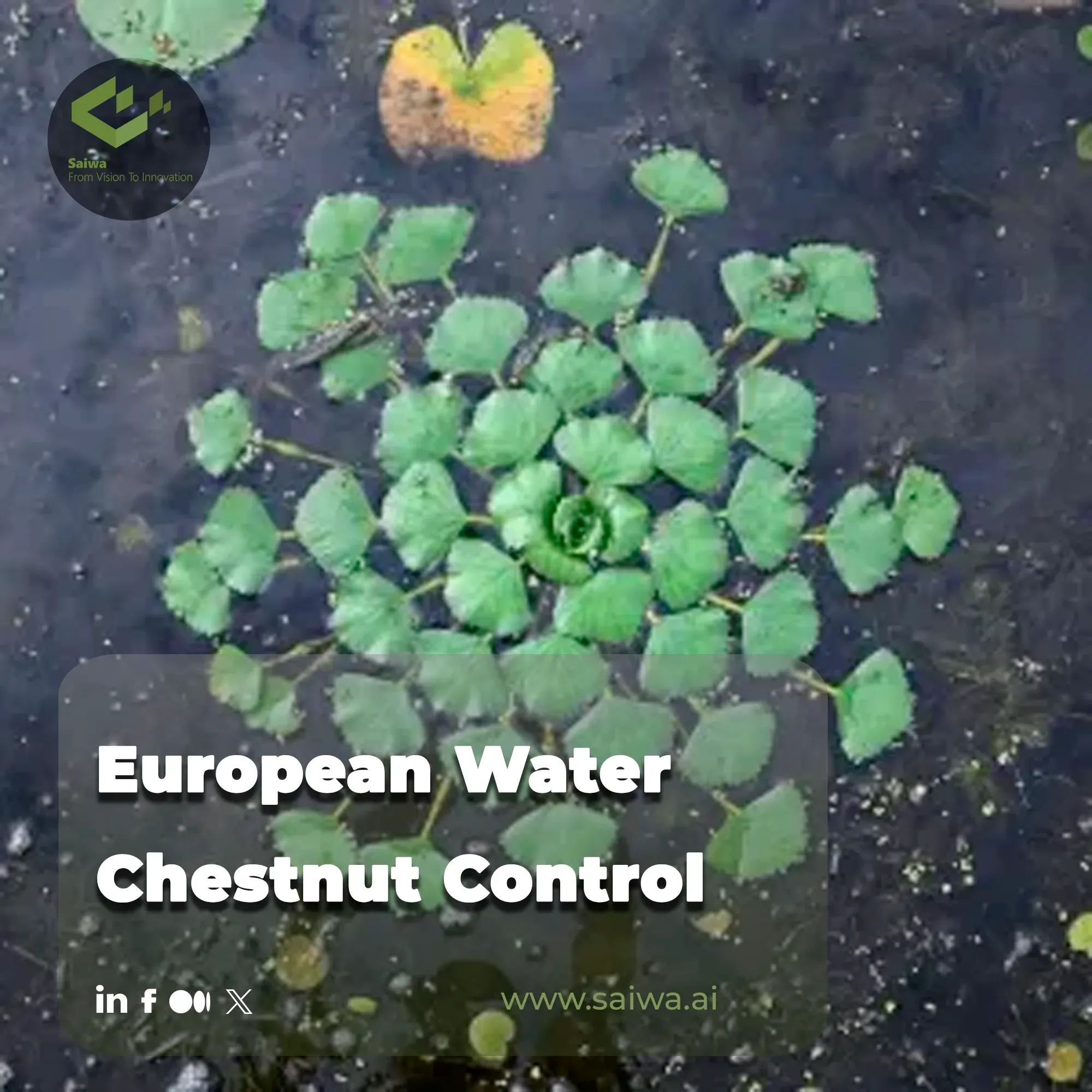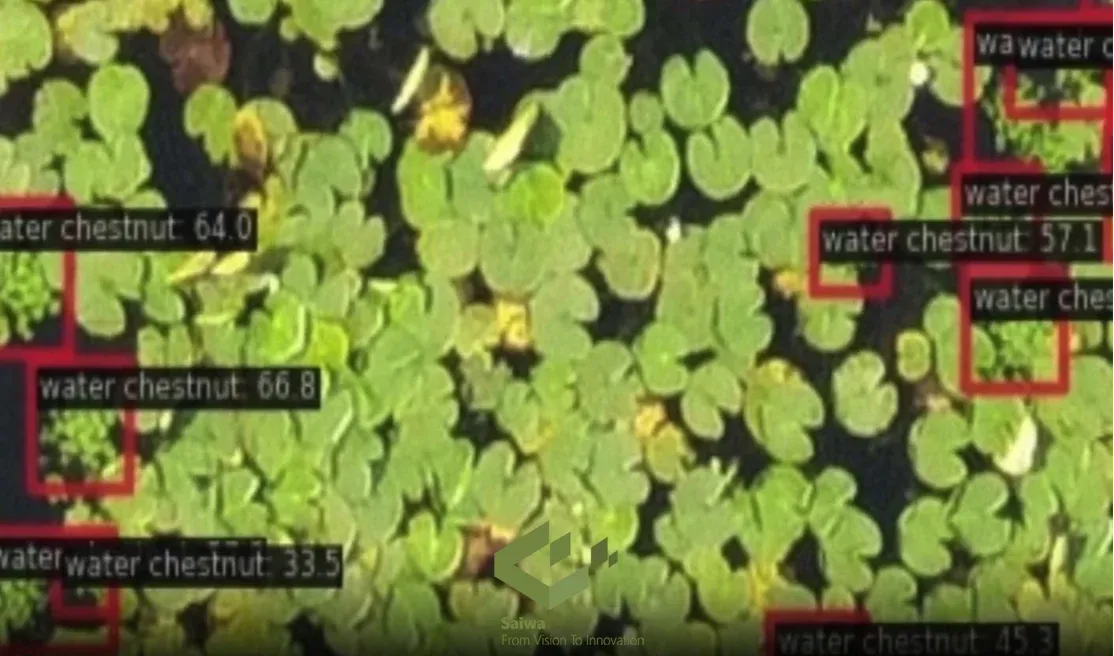Controlling European Water Chestnut: Ecological Threats, AI Solutions, and the Sairone Advantage

The Need for European Water Chestnut Control
European Water Chestnut (Trapa natans) is a highly aggressive invasive plant that creates severe ecological and economic damage. It forms dense, floating mats that block sunlight and deplete oxygen, which kills native aquatic life and chokes waterways, rendering them useless for recreation. The threat is amplified by its lifecycle and physical characteristics:
Ecological Disruption & Economic Burden: The impenetrable vegetation mats destroy local biodiversity and shut down lake-based tourism and commerce.
Human and Infrastructure Risks: The plant produces sharp, four-spined seeds that can injure waders and beachcombers.
Reproductive Advantage and Persistence: These seeds remain viable in the sediment for up to a decade, and a single acre can produce enough seeds to infest one hundred more acres the following year. This explosive growth makes conventional management difficult and underscores the need for advanced solutions like Sairone to effectively map and manage infestations before they become uncontrollable.
European Water Chestnut Detection: A Critical First Step in Control
Successful management is impossible without swift and accurate identification. Fortunately, the plant has several unique identifiers that become apparent as it moves through its seasonal life cycle, which helps field teams spot it. Pay attention to these key features:
Distinctive Floating Rosettes and Leaf Shape: Look for a mosaic of diamond-shaped, toothed leaves floating on the surface.
Feathery Submerged Leaves: Under the water, long, flexible stems feature feathery leaves.
White Four-Petaled Flowers: These small flowers bloom from the center of the rosette in summer.
Sharp, Spiny Seed Nuts: The infamous four-pointed seeds develop under the rosette and drop into the water.
Seasonal Variations: The plant's appearance changes from its initial growth in spring to its mature, seed-bearing stage in late summer.

Cutting-Edge Techniques and Technologies for European Water Chestnut Control
Tackling a widespread invasion like European Water Chestnut with traditional methods, such as manual removal, is no longer sufficient on its own. Fortunately, the fight has now advanced into the technological sphere, where aerial surveillance is combined with advanced data analysis to forge a more strategic and effective approach. This modern strategy is built upon several key pillars, which we will explore in detail.
Remote Sensing and Geospatial Analysis
The first step in a modern strategy is to gain a comprehensive, bird's-eye view. The ability to see the entire operational area has fundamentally revolutionized surveillance efforts.
Drones Imagery: Unmanned aerial vehicles (UAVs) can rapidly survey vast and otherwise inaccessible wetland areas to map out patches of the infestation.
Satellite Imagery: For even larger-scale operations, satellite data provides a valuable macro-level view of potential spread patterns.
AI-Powered Analysis for Rapid Identification
Gathering images is only half the battle. The true breakthrough occurs when artificial intelligence is deployed to rapidly analyze this massive amount of visual data. Advanced algorithms can identify the invasive species with a level of accuracy that surpasses the human eye, pinpointing targets within the imagery.
Precision Herbicide Application
In cases where chemical intervention is required, there is no longer a need for broad, untargeted spraying. The GPS data generated from AI-powered drone analysis allows for the precise and targeted application of herbicides. This method minimizes the impact on the surrounding environment while maximizing the effectiveness of the treatment.
How Sairone is Revolutionizing European Water Chestnut Control
Saiwa's Sairone platform provides the critical advantage by solving the primary bottleneck: manually analyzing drone imagery. It automates Weed detection with AI, converting a 50-hour review task into a two-minute process in a proven case study.
This efficiency shifts the focus from slow searching to rapid eradication. By delivering precise, GPS-backed intelligence, Sairone makes large-scale European Water Chestnut control a truly achievable goal, powerfully demonstrating the impact of AI in wildlife conservation.
Conclusion
The ecological and economic threats posed by Trapa natans are significant, magnified by its persistent and aggressive reproductive strategy. While traditional control methods remain vital, they struggle to keep pace with the scale of the invasion. Technology offers a critical force multiplier. By integrating AI-powered analysis platforms like Sairone, conservation and agricultural stakeholders can overcome the limitations of manual surveillance, making effective, large-scale management a feasible and achievable reality.
Note: Some visuals on this blog post were generated using AI tools.
